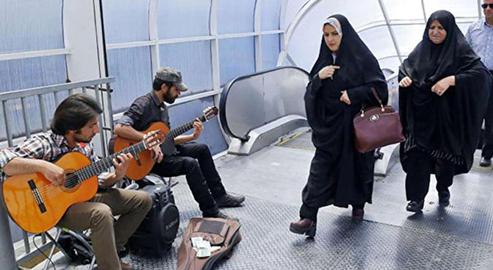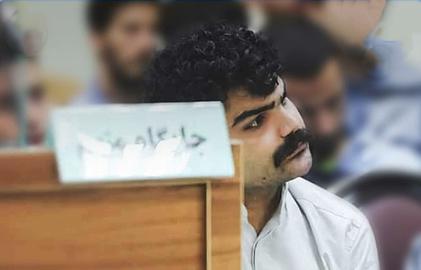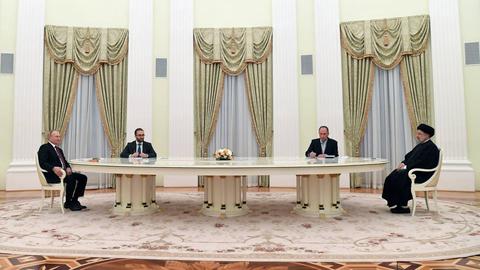For more than 40 years now, Iranian arts and culture have been fractured and undermined. The edicts of the ruling Shia clergy, censorship and political sensitivities have made the Islamic Republic a hostile place for many intellectuals and creatives. No truer is this than of musicians, who have left Iran in droves since 1979.
There remains no unified policy on the arts at the macro level, and successive governments have taken different stances on the issue. Since the end of the Iran-Iraq War, the Shia jurisprudential reading of music and art has dominated: pop music all but disappeared in the late 1980s and most Pahlavi-era artists fled the country. But to this day, jurists still disagree on which aspects of music are haram (forbidden) or halal (permitted).
The Iranian Cultural and Research Quarterly, which is affiliated with the Ministry of Science’s Institute for Cultural and Social Studies, recently published a detailed study on the tumultuous history of music production in Iran since the Islamic Revolution. Entitled Challenges of Religion and Music in Contemporary Iran, study took in official figures on the number of musical works licensed for production and distribution in Iran in different periods of the country’s recent history. In turn, it highlighted how disputed interpretations of religious texts in particular have constrained Iranian arts and music at different times.
After the Islamic Revolution
In the decade that followed the 1979 Islamic Revolution, many musical activities were stopped by the newly-formed Ministry of Culture and Islamic Guidance. Even the Tehran Symphony Orchestra, the country’s oldest and largest, was blacklisted as “vulgar” by the new regime.
Official statistics show that between 1981 and 1985, just 11 works of classical music were granted production licenses, and just 13 between 1985 and 1989. During this eight-year period, coinciding with Ali Khamenei’s two terms as President of Iran, not a single work of pop music was officially licensed or produced in Iran.
Meanwhile, Ministry officials had formed a new “Center for Revolutionary Hymns and Songs”, mostly promoting pro-Islamic Republic and military anthems. In the same period 86 musical works described as “educational” and 116 aimed at children were licensed for dissemination in Iran, but tapered off sharply towards the end of the decade as the war consumed Iranian public life. “Traditional” songs flourished, however, with 101 different works licensed, mostly toward the end of Khamenei’s tenure as president.
A Post-War Production Surge
The conditions and outcome of the war had brought about a new penchant for sad, mournful music among the ruling clergy, and the Tehran Symphony Orchestra was allowed to tour again. A fatwa by Ruhollah Khomeini also permitted the purchase of some musical instruments, with the Ministry of Guidance instructed to promote “music of value”.
The first four years of Hashemi Rafsanjani’s presidency thus saw significant growth in the production of classical music, with 206 works rubber-stamped by the Ministry of Culture between 1989 and 1993. The trend did not last long, however, with the number of works dropping to 159 in the next four-year period.
Traditional music remained a genre favored by the Ministry, with 196 works licensed in the first four years of Rafsanjani’s presidency, rising to 232 in the second. But in the late 1990s, pop music began to experience a nascent revival. Though only 33 works were licensed under Rafsanjani, they were allowed to be broadcast on radio and TV as well as disseminated as albums and casettes. Music was once again becoming a contested political issue.
Music in the 2000s: A Battleground
In the early 2000s, the study posits, a widespread desire for concerts and public performances spread throughout Iranian society. The economic benefit encouraged governments to think more seriously about their promotion, even though such events were strongly opposed by fanatical and influential clerics.
This led to a confused situation in which certain types of gig were permitted, and others criminalized and forced underground. The Iranian judiciary, intelligence and security agencies began to enter the fray during Mohammad Khatami’s presidency, trying to impose controls on the Iranian cultural scene by breaking up concerts and arresting organizers.
During Khatami’s tenure from 1997 to 2005, some 5,300 concerts were performed onstage in Iran with official permission. But due to the crackdown, this figure had tumbled to just 1,740 during Ahmadinejad’s first term, and 2,200 in his second. The number of large-scale festivals, though, remained steady: 23 were held under Khatami and 29 under Ahmadinejad. All in all, about 2,500 music albums were released during the Khatami years, rushing to just over 3,000 during Ahmadinejad’s tenure. Amid the ongoing tussle, one strand of Iranian musical activity remained barred outright: women’s solo singing, to which the clergy took and still takes exception.
In the final years of Ahmadinejad’s tenure, many musicians who had been approved in the past now found themselves unable to obtain licenses. Concerts for which licenses had been granted would abruptly be shut down after complaints from the ruling clergy in Qom. Underground gigs flourished again due to the restrictions, and many albums and songs, not included in the study, were simply disseminated on the black market instead.
Expansion Under Rouhani
With a more moderate chief executive in the driving seat from 2013 to 2021, the number of concerts given the green light in Iran mushroomed to more than 6,200. A total of 41 music festivals were held, and where not a single music video had received a production license under Khatami or during Ahmadinejad’s first term, 139 were newly approved in the first four years of the Rouhani administration.
The report’s author also reflected on the changing attitude of Iran’s clerical caste to music in the country. In the 1980s, they said, the role of music in people’s lives was forcibly diminished; the situation improved in the 1990s and 2000s but that relaxation was met with a backlash from conservatives and grandees in Qom. Now, after a surge in production and live events under Hassan Rouhani, it remains to be seen what the situation will be after four years of Ebrahim Raisi.
Related coverage:
MP: Want to Buy Sunglasses or Musical Instruments? Leave Iran
Erratic Censorship of Instruments Confounding Musicians in Iran
Officials Panic Over 'Abnormal Behavior' at Underground Gigs in Iran
On Censorship, Cultural Destruction and the Power of Music
visit the accountability section
In this section of Iran Wire, you can contact the officials and launch your campaign for various problems

























comments